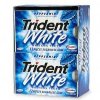Original topic.
Hi, Richardjw.
The ORIGINAL topic here was, and I copy and paste:
"tractor pans or scrapers which do you like better".
As seems to be very common in such discussions, the focus had shifted a little by the time you came along, from the original question to how long or SHORT a life rubber tracks had in this application and the reasons therefore.
You came along with some good sense about balance and ballast - and then you posted this gem, and I copy and paste:
"Don't even consider water ballast for tyres in this application. The tyre sidewall HAS to flex in order to put the traction down correctly. Water will prevent this." (Un-C+P)
Note that at this stage you didn't mention that tire manufacturers didn't recommend water ballast in their tires these days. You just made a flat blanket statement that water ballast would prevent the tire sidewalls flexing.
It was at this point that you started unravelling. I doubt there is a person of either gender on this forum who has had anything to do with water ballast in tires who hasn't noticed that water-ballasted tires tend to have MORE sidewall flex, NOT less. I personally have never yet met anyone who attempted a 100% fill with water but, even if it was done, you would have to put a fair bit of pressure behind the last of the water to STOP sidewall flex.
I have read the article at the other end of your link. (Yer certainly dug that one out of the archives, didn't you? 2001.) It does say that some tire makers and some tractor makers are suggesting suitcase and wheel weights rather than liquid ballast. It also goes on to say that the tire dealers are NOT finding that this advice is changing big mobs of people's approaches to getting more traction. Maybe the tire and tractor makers ought to point an ear or six in the direction of the end users.
I have also yet to see wheel weights give as much increase in traction as a 75% fill with water and running the tires at about 18 - 20 PSI instead 30 - 40 PSI air-filled. I think this might have something to do with comparative footprint???????? And you still have to keep the darned wheel weights bolted up tight too.
Yes, 500 hp TRACTOR tires are a somewhat different proposition from 500 hp 4wd loader tires. Have you ever watched the distortion and flexing, especially in HEAVY digging, that are part of a loader tire's life? You just don't get that same kind of punishment dished out to tires on tractor-pan applications.
In closing, we love to 'see' new faces posting here but I think most of us would prefer that the posts make good sense, have somethiong worthwhile to contribute AND explain the logic or reasons behind whatever information or views are posted. Flat, blanket statements, especially without accompanying reasons, do not tend to be well received here.


